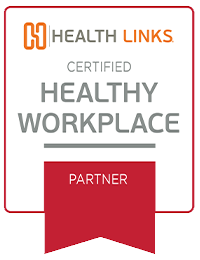
Health Links (HL): Why is the health and safety of your employees important to you?
Pitkin County Government (PCG): Pitkin County cares for its employees! The core of the County's strategic plan is achieving a "high quality of life." By investing in health and safety, we know the result is happier and more productive employees.
And quite frankly, Pitkin County is determined to keep health care costs down for its employees and itself as an employer, being situated in one of the most expensive areas to live and receive medical care in Colorado.
HL: What does your workplace health and safety program look like? Do you offer both components to employees?
PCG: Pitkin County's workplace health and safety program comprehensively focuses on policies, practices/culture, programs, and education to contribute to a positive work environment and high quality of life. Pitkin County's adopted pillars of health and well-being are 1) physical, 2) emotional/mental, 3) financial, and 4) social.
Pitkin County is strategically aligning its workplace health and safety program. Pitkin County is implementing Total Worker Health strategies to address top medical and worker's comp claims. Examples: facilitated stretching, mindfulness classes, ergonomic work areas, biometric screenings, and health and well-being policies that support employee health.
HL: How will you/do you know your program is successful?
PCG: Pitkin County employees aren't shy about expressing when programs are beneficial and successful, and when they are not.
Pitkin County has completed a thorough needs assessment and uses numerous metrics from a variety of assessment/evaluation tools (Employee Opinion Survey; Health Links Health Business Report; HERO Scorecard; Risk Management – Workers' Compensation: Incident Rate, Injury Type / Cost, Injury Cause / Cost; Health Plan Costs and Claims, TRIAD EAP #’s and Issues).
HL: What obstacles did you have to overcome to get your program started? How did you overcome them?
PCG: Pitkin is fortunate to have County management leadership support and staff time to develop, implement, and manage a health, well-being, and safety program. Having initial and ongoing leadership support and engagement is critical.
There weren't any major obstacles getting started. Now that there is a program in place, there have been a few challenges with allowing staff to participate in health and well-being activities on work time. This is a culture shift for certain managers and departments and is being addressed through education and policy: "The County does support staff participating in employee well-being and worksite wellness activities that are designed to increase staff productivity, retention, and decrease healthcare costs and absenteeism. Employees are encouraged to participate in activities that support workplace wellness and their own health and well-being."
HL: Does your health and safety program help give back to your community?
PCG: Pitkin County has a history of giving back to the community. Yes, one of the goals under our "social" pillar in the Employee Health and Well-Being Strategic Plan is to "promote volunteer opportunities." Volunteering is encouraged and the County gives up to 16 hours for full-time employees of "volunteer time."
HL: What tip/advice would you give to a business that is considering starting a workplace health and safety program?
PCG: Know your organization's health indicators and risks. Employee engagement is critical. Work with a health and safety committee to set goals and get diverse buy-in. Be strategic every step along the way. Start small.



